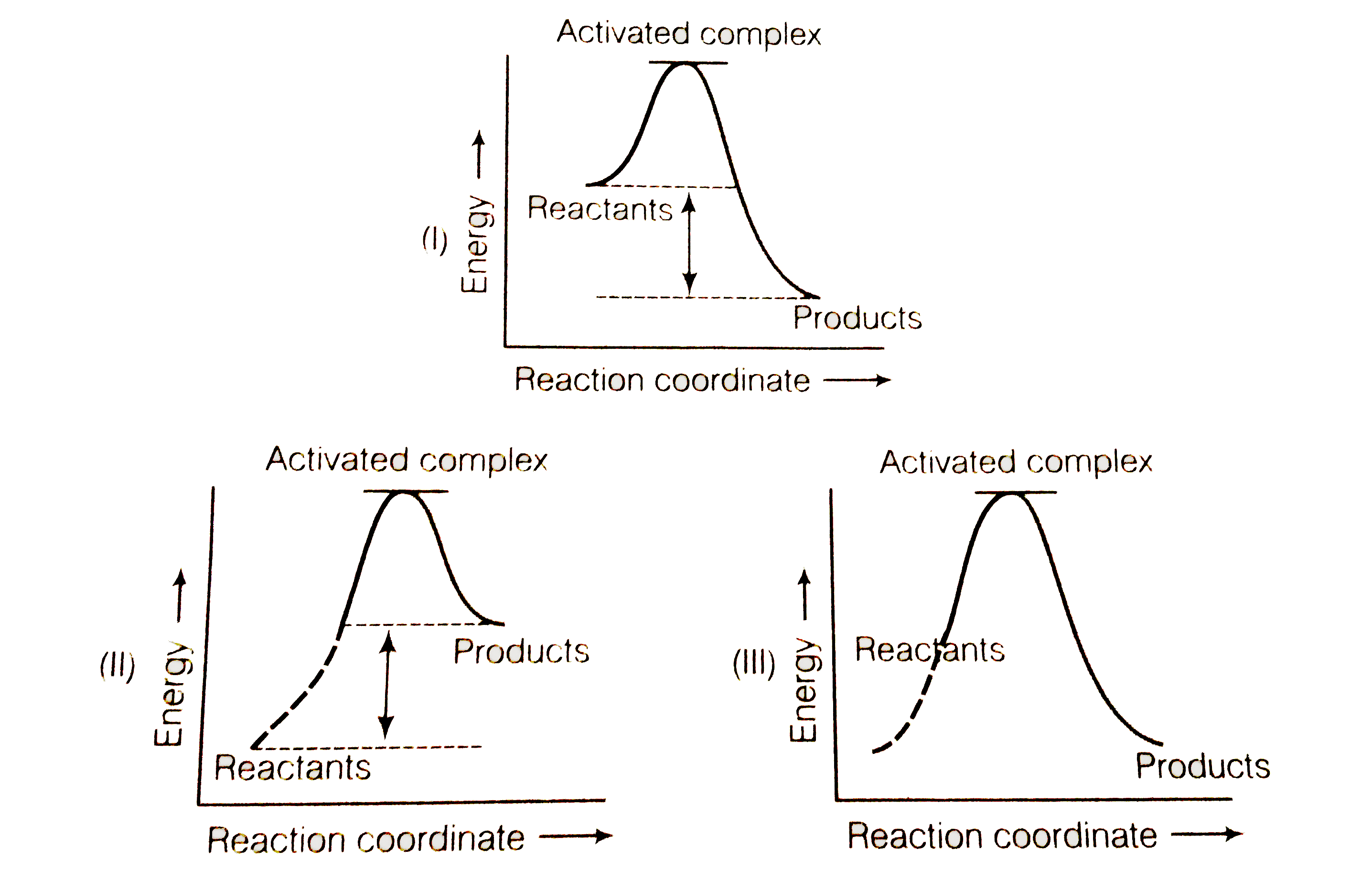For which of the following represents the expresison for theee/fourth life reaction?
k2.303log4/3
2.303klog3/4
2.303klog4
2.303klog3
The correct Answer is:C
To solve the question regarding the expression for the three-fourth life of a reaction, we can follow these steps:
1. Understand the Concept of Half-Life and Three-Fourth Life:
- The half-life of a reaction is the time required for the concentration of a reactant to decrease to half of its initial concentration.
- The three-fourth life (or 75% life) is the time required for the concentration of a reactant to decrease to one-fourth of its initial concentration.
2. Identify the Reaction Order:
- The question implies that we are dealing with a first-order reaction. For a first-order reaction, the rate constant k is related to the concentration of the reactants.
3. Use the First-Order Reaction Formula:
- The formula for the time t for a first-order reaction is given by:
t=2.303klog((A0)(A))
where (A0) is the initial concentration and (A) is the concentration at time t.
4. Determine the Concentration After Three-Fourths of the Reaction:
- If 75% of the reactant has reacted, then 25% remains. Therefore, if the initial concentration is (A0), the final concentration (A) after 75% of the reaction will be:
(A)=(A0)−0.75(A0)=0.25(A0)=(A0)4
5. Substitute the Values into the Formula:
- Now substituting (A0) and (A) into the formula:
t3/4=2.303klog⎛⎜⎝(A0)(A0)4⎞⎟⎠
- This simplifies to:
t3/4=2.303klog(4)
6. Final Expression:
- Therefore, the expression for the three-fourth life of a first-order reaction is:
t3/4=2.303klog(4)
- This corresponds to option number C in the question.
Final Answer:
The expression for the three-fourth life of the reaction is:
t3/4=2.303klog(4)
This is option C.
- The half-life of a reaction is the time required for the concentration of a reactant to decrease to half of its initial concentration.
- The three-fourth life (or 75% life) is the time required for the concentration of a reactant to decrease to one-fourth of its initial concentration.
- The question implies that we are dealing with a first-order reaction. For a first-order reaction, the rate constant k is related to the concentration of the reactants.
- The formula for the time t for a first-order reaction is given by:
t=2.303klog((A0)(A))
where (A0) is the initial concentration and (A) is the concentration at time t.
- If 75% of the reactant has reacted, then 25% remains. Therefore, if the initial concentration is (A0), the final concentration (A) after 75% of the reaction will be:
(A)=(A0)−0.75(A0)=0.25(A0)=(A0)4
- Now substituting (A0) and (A) into the formula:
t3/4=2.303klog⎛⎜⎝(A0)(A0)4⎞⎟⎠
- This simplifies to:
t3/4=2.303klog(4)
- Therefore, the expression for the three-fourth life of a first-order reaction is:
t3/4=2.303klog(4)
- This corresponds to option number C in the question.
The expression for the three-fourth life of the reaction is:
t3/4=2.303klog(4)
This is option C.
Topper's Solved these Questions
- CHEMICAL KINETICSBOOK - CENGAGE CHEMISTRY ENGLISHCHAPTER - CHEMICAL KINETICSEXERCISE - Exercises Assertion-Reasoning
22 Videos
- CHEMICAL KINETICSBOOK - CENGAGE CHEMISTRY ENGLISHCHAPTER - CHEMICAL KINETICSEXERCISE - Exercises Integer
15 Videos
- CHEMICAL KINETICSBOOK - CENGAGE CHEMISTRY ENGLISHCHAPTER - CHEMICAL KINETICSEXERCISE - Exercises Multiple Correct
33 Videos
- CARBOXYLIC ACIDS AND THEIR DERIVATIVESBOOK - CENGAGE CHEMISTRY ENGLISHCHAPTER - CARBOXYLIC ACIDS AND THEIR DERIVATIVESEXERCISE - Exercises Archives (Analytical And Descriptive)
34 Videos
- COORDINATION COMPOUNDSBOOK - CENGAGE CHEMISTRY ENGLISHCHAPTER - COORDINATION COMPOUNDSEXERCISE - Archives Subjective
18 Videos
Similar Questions
Which of the following represents voltage ?
View SolutionWhich of the following represents hydrolysis ? .
View SolutionWhich of the following represents a redox reaction?
View SolutionWhich of the following represents redox reactions?
View SolutionWhich of the following represent the expression for 34th life of first order reaction
View SolutionWhich of the following represents an exothermic reaction :-
View SolutionWhich of the following reactions represents SN reaction ?
View SolutionWhich of the following graph represents exothermic reaction ?

View SolutionWhich among the following represents the correct reaction of general combustion?
View SolutionWhich of the following represents saponification reaction ?
View Solution
